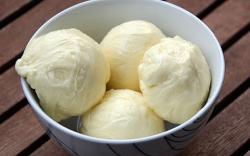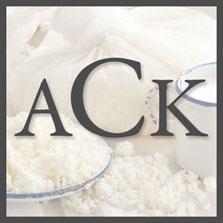 Aren’t dinner guests becoming more demanding than ever? It’s not enough anymore to boast that you baked your own bread, cured your own ham, or hell, that you even killed the pig itself.
Aren’t dinner guests becoming more demanding than ever? It’s not enough anymore to boast that you baked your own bread, cured your own ham, or hell, that you even killed the pig itself.
As consumers we are demanding to know where the food on our plates comes from, and consider locality and quality as deciding factors when choosing where to eat out, or what to put in our shopping trolleys.
To that end don’t dinner guests have a right to be demanding? After all, the age-old culinary techniques adopted by artisan producers have become so accessible and familiar to us that it’s become possible for anyone to turn their hand to curing their own meat or making their own cheese.
There’s nothing like presenting a crumbly, extra-matured, 20 month-old Cheddar at the dinner table that’s been made by your own fair hand and ripened in your cellar. But okay, most of us city folk are unlikely to own a large enough bathroom, let alone a cellar, or the patience to sit and watch a cheese ripen for near-on two years.
That’s not to say you should write-off making your own cheese at home altogether.
Add lemon juice to warm milk and you have the base for making paneer, the traditional Indian cheese that is light, fresh and beautiful lightly fried and served in curries or salads.
Similarly, add rennet (either calf or vegetarian) to tepid cow’s milk, and after straining, pressing and salting the curd you have full-tasting halloumi ready for the grill in less time than it takes for Ocado to deliver it.
Most ‘fresh’ cheeses – those that are best eaten within a week of making – are so simple to create that a child could do it. All you need is a good recipe, equipment you’ll likely find in your kitchen anyway, a good supplier of whole milk (preferably raw, but otherwise pasteurised, unhomogenised will do), and some rennet and starter culture (click here for a list of suppliers).
 Those feeling more adventurous may want to consider having a go at making a Camembert style cheese, which can be ripe and ready to eat within 2-3 weeks. Better still, experiment with different ingredients, like sheeps, ewes or cows milk, or even a different selection of starter cultures.
Those feeling more adventurous may want to consider having a go at making a Camembert style cheese, which can be ripe and ready to eat within 2-3 weeks. Better still, experiment with different ingredients, like sheeps, ewes or cows milk, or even a different selection of starter cultures.
And if you’re ready to have a go at the 20 month-old Cheddar, but don’t possess the said cellar, buy a still-functioning second hand fridge, thermometer and hygrometer (for humidity control) and create your own.
Yes it’s easier to buy ready-made cheese in the supermarket, from producers who have been at it for years and have quite frankly gotten pretty good at it. In most cases it’s also cheaper to buy cheese ready to eat. But since when did anyone get that satisfaction of knowing they can say, “I made that” from a shop-bought product?
The reasons for making your own cheese at home are four fold: It’s fun, easy, supports local farmers, and gives you an opportunity to satisfy even your most demanding dinner guests.
If you’d like to learn more about how to make cheese at home, visit www.artisancheesekitchen.com for advice, guidance, recipes and more.
Read about how they make Parmesan in Parma here
